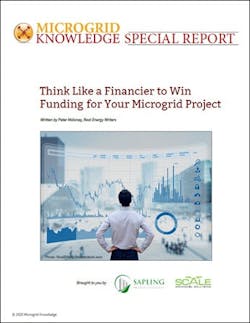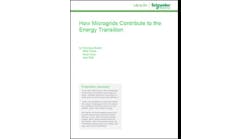We continue a special report series, courtesy of Sapling Financial Consultants and Scale Microgrid Solutions, that explores third-party ownership models for microgrids.
Get the full report.
The interlocking, and sometimes conflicting, interests and risks associated with revenue streams, ownership and capital requirements are the key drivers in drawing up the financial structure of an energy project.
Because advanced microgrids — those that use sophisticated controls with multiple generation resources — are relatively new, financiers look for characteristics in the projects that are familiar to them.
Solar power firms have made wide use of lease arrangements as a way of attracting residential customers wary of making a large upfront payment.
Such investors are likely to be familiar with the financial structures used for asset classes that are similar to microgrids, such as stand-alone independent power plants that use PPAs. Or, more recently, project financing backed by hedges. PPAs for microgrids can cover energy sales and green, or environmental, attributes, but they do not necessarily cover other potential revenue streams such as sales of ancillary services or the benefits of meeting reliability or sustainability goals.
Microgrid financing is evolving, however, and as investors become more familiar with the market and the asset class, they have adopted tried and true structures created to remove financial risk from the microgrid host. One financial tool is leasing.
This isn’t a new approach—solar power firms have made wide use of lease arrangements as a way of attracting residential customers wary of making a large upfront payment. Instead, they lease the equipment from a solar company that pays the installation costs and, in turn, receives regular payments from the homeowner for the energy.
There are a couple of different varieties of lease arrangements, including sale-lease back arrangements, but, overall, lease arrangements have been one of the largest contributors to the rapid growth of rooftop solar installations.
Energy-as-a-Service
Another tool that is becoming very popular for microgrids is the energy-as-a-service (EaaS) model. Although it was introduced only a couple of years ago, almost 44% of microgrids use the EaaS model, according to Guidehouse Insights. (Graphic right).
In some ways, the EaaS model resembles the leasing or sale-lease back model. The microgrid host makes regular, recurring payments structured as payments for system use.
For the host, an EaaS arrangement is very similar to paying a utility for energy, except that the host can contract with the developer for additional services that capture the broader range of a microgrid’s capabilities, such as resilience—i.e., the host will receive energy even if the surrounding grid suffers an outage.
Often an EaaS agreement is structured so that the client’s payments are competitive with what they ordinarily pay for utility services. In some cases, the EaaS payments are lower than utility payments because there are other income streams or incentives available to the EaaS provider, such as sales of ancillary services to the utility or grid operator.
Another advantage of the EaaS model is the flexibility that can be built into the contract. The agreement can be written so that the project can be scaled up in size over time. The EaaS model can also allow for the upgrading of technology over time as microgrid equipment improves.
Guidehouse Insights is forecasting that EaaS will become the preferred model for structuring microgrid deals for third-party ownership models for microgrids.
Catch up on the first entry in this report.
Download the full report, “Think Like a Financier to Win Funding for Your Microgrid Project,” courtesy of Scale Microgrid Solutions and Sapling Financial Consultants, to learn more about how investors and other financiers evaluate energy projects.







